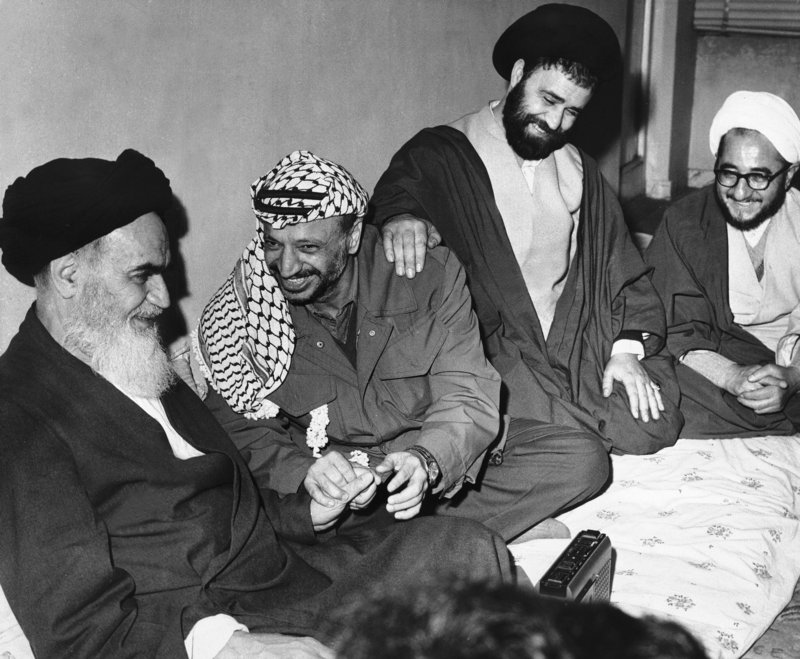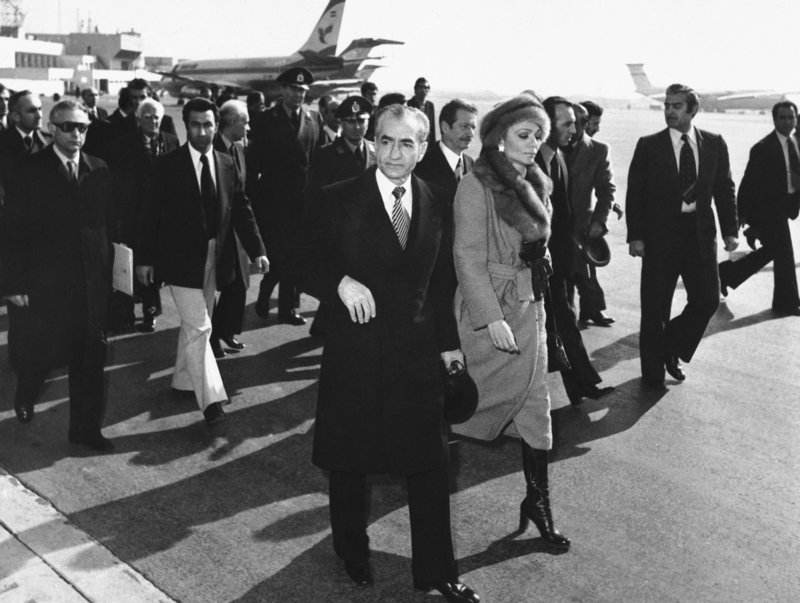– By ROBERT H. REID
The Associated Press
CAIRO – No sooner had the announcement come than the streets of Cairo exploded in joyful celebration. The hated autocrat was gone. A new era was ushered in with cheers, tears and the cacophony of car horns.
And so it was in Tehran — 32 years before to the day.
On Feb. 11, 1979, the commander of the Iranian air force announced on national radio that the armed forces were withdrawing from the fight to save the American-backed regime of Shah Mohammed Reza Pahlavi, who had already fled the country three weeks before in the face of burgeoning street protests against his autocratic rule.
With the military gone, the Iranian monarchy collapsed and with it any chance that the shah would return from what had been spun as a vacation — ironically to Anwar Sadat’s Egypt.
As the troops returned to barracks, Tehran erupted into wild celebrations — punctuated by the din of thousands of horns.
The popular revolt against the shah raised alarm bells in the West, which had seen the prickly monarch as a trusted ally and counterweight to hard-line Arab regimes and Palestinian radicals. The face of the revolution was Ayatollah Ruhollah Khomeini, whose demeanor, vehemently anti-American rhetoric and stern interpretation of Islam challenged not only Western interests but also Western values.
Egypt’s revolutionaries of today appear far less threatening, representing a broad spectrum of Internet-savvy youth, mainstream politicians and Islamists bound together by hatred of President Hosni Mubarak and a desire for a more open, democratic system.
The closest thing to a symbol of Egypt’s uprising was a 30-year-old Google executive, whose passionate, tearful remarks made on a private television station after his release from detention drove many modern-thinking, middle-class Egyptians into the streets.
Nevertheless, the images from Tehran a generation ago and from Cairo on Friday’s “Night of Liberation” were uncannily familiar. The palpable sense of relief. The euphoria among the government’s opponents. The carnival-like atmosphere. The explosion of national pride. And the blind faith that the new regime would be more just, more equitable and more democratic than the old.
Iran’s masses were no less hungry for democracy than the Egyptians who crowded into Cairo’s central Tahrir Square to demand an end to Mubarak’s rule. Where the Iranians put their trust in Muslim clerics to bring about a just society, the Egyptians turned to the secular-minded army to give the Mubarak regime a final push.
Egypt’s young revolutionaries used the tools of the 21st century — the Internet, Facebook and Twitter — to organize the first protests in late January. After the government unplugged the Internet and shut down mobile phones, Egyptians turned to Arabic language television stations — Al-Jazeera, Al-Arabiya and Alhurra — for word of what was happening on the streets.
No such technological wonders were available to the Iranian opposition. Messages and sermons from Ayatollah Khomeini, who was in exile in Paris until the final days of the uprising, were spread by cassette tapes smuggled into the country, copied and distributed to mosques.
From the mosques, information spread by word of mouth through clerics and intellectuals who grew ever bolder as the shah’s security services began to disintegrate.
Instead of turning to the likes of Al-Jazeera for news, Iranians relied on crackling shortwave broadcasts by the British Broadcasting Corp.’s Persian language service, which the government tried to jam. Nearly every Western journalist in Iran pretended to be from the BBC when confronted by protesters who were sometimes hostile to Americans. Every Khomeini supporter seemed to know how to say in English: “Ah, you BBC? BBC very good.”
Tehran University was transformed into a giant speaker’s corner, where people could come every day to listen to anti-regime clerics rail against the shah and his American backers.
It took Egypt’s demonstrators only 18 days to force out Mubarak, who had ruled the country for nearly three decades. Although arson and looting broke out briefly last month — presumably instigated by state security to frighten the public and discredit the protests — the anti-Mubarak movement was remarkably peaceful and disciplined. Most of the violence appeared instigated by police and thugs believed paid by the ruling party, who ran wild for days until the army reined them in.
Banks closed and ATMs ran out of cash. Groceries began running short on supplies. By and large, however, life in much of the capital continued as it had before — even as crowds in Tahrir Square grew ever larger.
Not so the Iranian uprising. It began in January 1978 with street demonstrations against the shah. By the end of the year, the country was paralyzed by strikes and demonstrations.
Government ministries all but ceased functioning. Airlines stopped flying to Tehran. With a daily 9 p.m. curfew, which was brutally enforced in the capital, Iranians huddled in their dark, unheated homes, listening to the periodic bursts of gunfire that punctuated the night.
Protesters grew ever more violent. The shah’s Imperial Guard did not hesitate to fire on unarmed demonstrators, some of whom were willing — sometimes even eager — for martyrdom.
Violence was not limited to government forces. Young demonstrators hurled firebombs — gasoline poured into soft drink bottles and lit with a rag — at the Guardsmen.
Food supplies, electricity and cooking gas were scarce.
As chaos engulfed Tehran, the shah left on Jan. 16, 1979, leaving the government in the hands of his appointed prime minister. Khomeini returned two weeks later to a massive reception by millions of people.
Less than two weeks after Khomeini returned, air force technicians at a base in Tehran mutinied, setting off a day and night of fighting. A monarchial system that had lasted for more than 2,000 years crumbled.
Egypt’s revolt achieved its main goal — Mubarak’s ouster — before the conflict had torn apart Egyptian society.
After Mubarak resigned Friday, Egyptians partied in the streets, set off fireworks and sang patriotic songs until dawn.
Three decades before, the collapse of the shah’s regime triggered three terrifying days of looting, arson and street fighting. Pro-Khomeini groups stormed prisons and police stations, looting weapons and hunting down Imperial Guardsmen and other members of the old regime.
The yearlong revolution had polarized society and built up tensions that exploded as the Khomeini loyalists struggled to restore order.
A fanatical mullah broadcast a call on state radio to hunt down and punish foreigners, prompting Khomeini’s staff to issue a counter order to protect non-Iranians. Rival militias seized the Intercontinental Hotel, home to most foreign journalists, until Khomeini loyalists arrived and ran them off.
The shah’s regime resisted the demands of the street and collapsed, setting in motion social and political forces that still trouble the country and the region a generation later. Mubarak stepped down, and the world now waits to see if the fallout will be different.
Send questions/comments to the editors.




Success. Please wait for the page to reload. If the page does not reload within 5 seconds, please refresh the page.
Enter your email and password to access comments.
Hi, to comment on stories you must . This profile is in addition to your subscription and website login.
Already have a commenting profile? .
Invalid username/password.
Please check your email to confirm and complete your registration.
Only subscribers are eligible to post comments. Please subscribe or login first for digital access. Here’s why.
Use the form below to reset your password. When you've submitted your account email, we will send an email with a reset code.